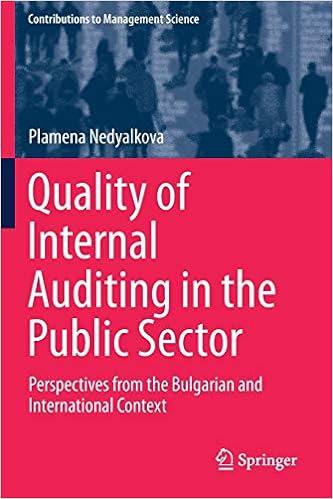Question
Please consider the following data. The data will be used for the entire problem. Only move forward the viable investments to the next capital rationing
- Please consider the following data. The data will be used for the entire problem. Only move forward the viable investments to the next capital rationing model. Meaning if the investment passes the capital rationing test, put that investment into the next model. i.e. if one of the investments doesnt pass the payback test, dont move it forward to ROR.
Bonnet Corporation is considering 8 different investments. Here is the data for the 8 investments:
| McCoy | Stede | Rackham | Lavasseur | Anthos | |
| Investment | $525,000 | $600,000 | $820,000 | $337,500 | $1,350,000.00 |
| Salvage Value | $72,000 | $83,000 | $104,000 | $65,000 | $550,000 |
| Net cash flows: | |||||
| Year 1 | $125,000 | $155,000 | $390,000 | $180,000 | $220,000 |
| Year 2 | $105,000 | $155,000 | $245,000 | $122,000 | $194,000 |
| Year 3 | $85,000 | $155,000 | $128,000 | $84,000 | $179,000 |
| Year 4 | $105,000 | $155,000 | $62,000 | $205,000 | |
| Year 5 | $125,000 | $43,000 | $247,000 | ||
| Year 6 | $272,000 | ||||
| Discount Rate | 16.75% | 5.95% | 14.15% | 9.25% | 16.50% |
| Drake | Sansho | Trepidation | |
| Investment | $310,000.00 | $195,000.00 | $1,095,000.00 |
| Salvage Value | $3,500 | $30,000 | $275,000 |
| Net cash flows: | |||
| Year 1 | $105,000 | $77,500 | $145,000 |
| Year 2 | $105,000 | $77,500 | $252,000 |
| Year 3 | $105,000 | $77,500 | $306,000 |
| Year 4 | $105,000 | $289,000 | |
| Year 5 | $257,000 | ||
| Year 6 | |||
| Discount Rate | 4.95% | 10.55% | 9.50% |
- Describe the payback period. Include strengths and weaknesses. (4 points)
- Calculate the payback period of each investment. (round to nearest tenth) (20 points)
- Which investments are acceptable? Which investment is the best? Why? (4 points)
- Describe the AROR. Include strengths and weaknesses. (4 points)
- Calculate the AROR for each investment. (round to nearest hundredth) (20 points)
- Consider the discount rate as the minimum rate of return for Bonnet Corp. Which investment is superior? Why? (4 points)
- What is the NPV? What are its Strengths and weaknesses? (4 points)
- Calculate the NPV for each remaining investment. (20 points)
- Calculate the profitability index of each. (6 points each)
- Which investment is superior? Why? (4 points)
- After you make your selection for the investment. 6 months time passes and an evaluation is taken. The evaluation discover the investment is underperforming. Your board wants you to spend more money to make this investment work. What will your response be? Why?
Step by Step Solution
There are 3 Steps involved in it
Step: 1

Get Instant Access to Expert-Tailored Solutions
See step-by-step solutions with expert insights and AI powered tools for academic success
Step: 2

Step: 3

Ace Your Homework with AI
Get the answers you need in no time with our AI-driven, step-by-step assistance
Get Started


